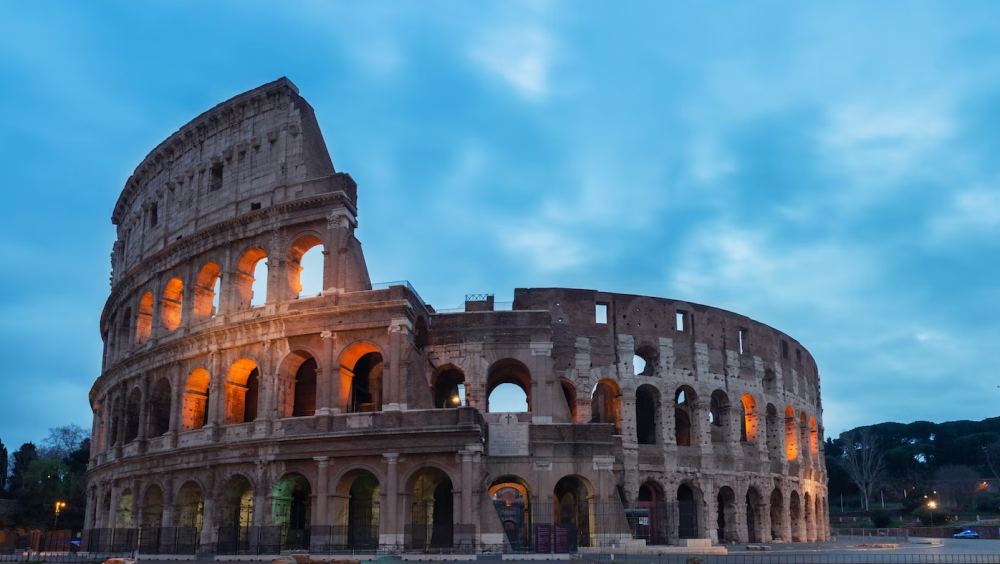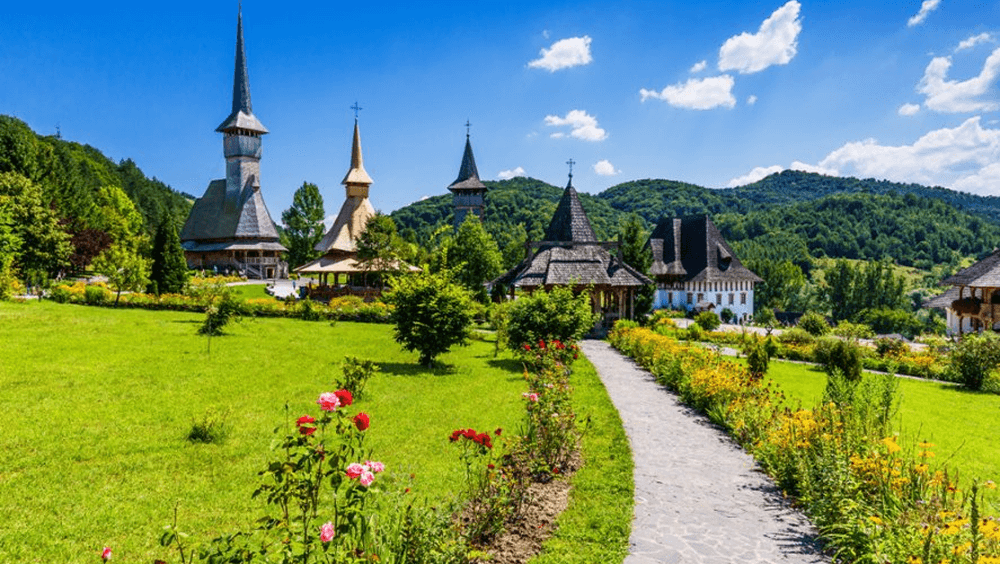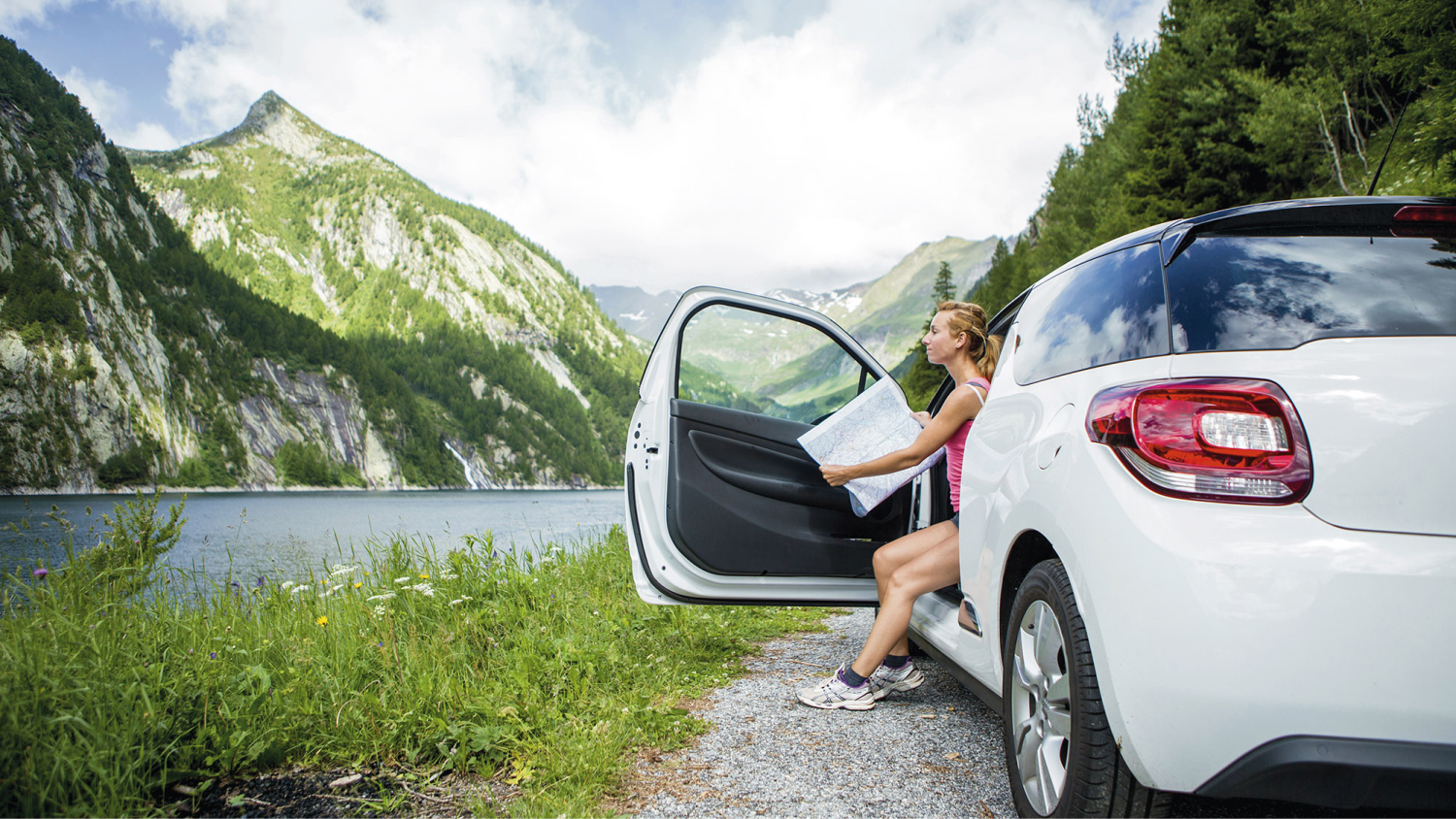Deva Fortress and its cable car – complete guide for visitors

Strategically located on a volcanic promontory overlooking the Mures Valley, Deva Fortress stands out as one of the most significant medieval fortifications in Transylvania. But beyond its imposing walls, what secrets and stories lie hidden in this thousand-year-old fortress?
This detailed guide will take you on a fascinating journey through the unique history, sights and experiences that Deva Fortress has to offer, turning your visit into an adventure you will remember for a long time to come.
- Who built Deva Fortress – a brief history
- How to get to Deva Fortress
- Deva Fortress – program and prices
- Attractions and points of interest in Deva Fortress
- Unique experiences at Deva Fortress
- Sights to visit in the area of Deva Fortress
Who built Deva Fortress – a brief history
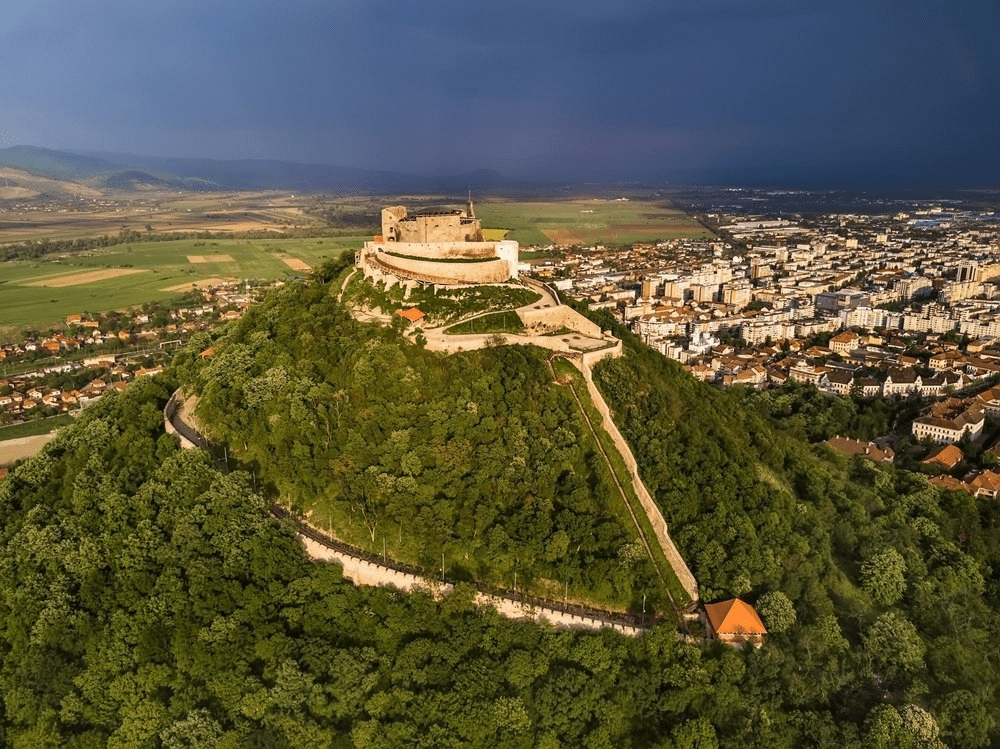
The origins of this imposing monument can be traced back to the 13th century, when the fortress of Deva was built as a defense against Tatar incursions.
The first documentary mention of Deva dates back to 1269, in an official act issued by King Stephen V of Hungary. Over the centuries, the fortress has played an essential role in Transylvania’s defense system, being the scene of important historical events.
In 1444, Deva Fortress came into the possession of the voivode Iancu de Hunedoara, who transformed it into an impressive noble residence. Under his rule and that of his successors, the fortress experienced a period of prosperity and modernization. Architecturally, the fortress was built on three main levels – a layout typical of medieval fortresses in the region – with thick stone walls, polygonal bastions and strategically placed defense towers.
The upper part of the fortress (the citadel proper) housed the administrative buildings and living quarters, while the lower parts were used for defensive and logistical support. The construction was adapted to the steep volcanic terrain of the Citadel Hill, offering a natural military advantage and excellent visibility over the Mures valley.
Over time, the fortress of Deva has withstood numerous sieges, including the one during the uprising led by Horea, Cloșca and Crișan in 1784. Its strategic importance gradually declined in the 19th century, and in 1849, a powerful explosion in the munitions depot caused considerable damage.
Today, the restored ruins of Deva Citadel offer a fascinating insight into Transylvania’s tumultuous history, as well as a spectacular view of the surrounding area. This historic monument remains a symbol of resilience and past glory, attracting many visitors each year with an interest in history and medieval architecture.
▶️ You work abroad and came for a short vacation in Romania? For your travels, choose a car from Enterprise Rent a Car’s car rental service from anywhere, so that your travel plans go as smoothly as possible.
How to get to Deva Citadel
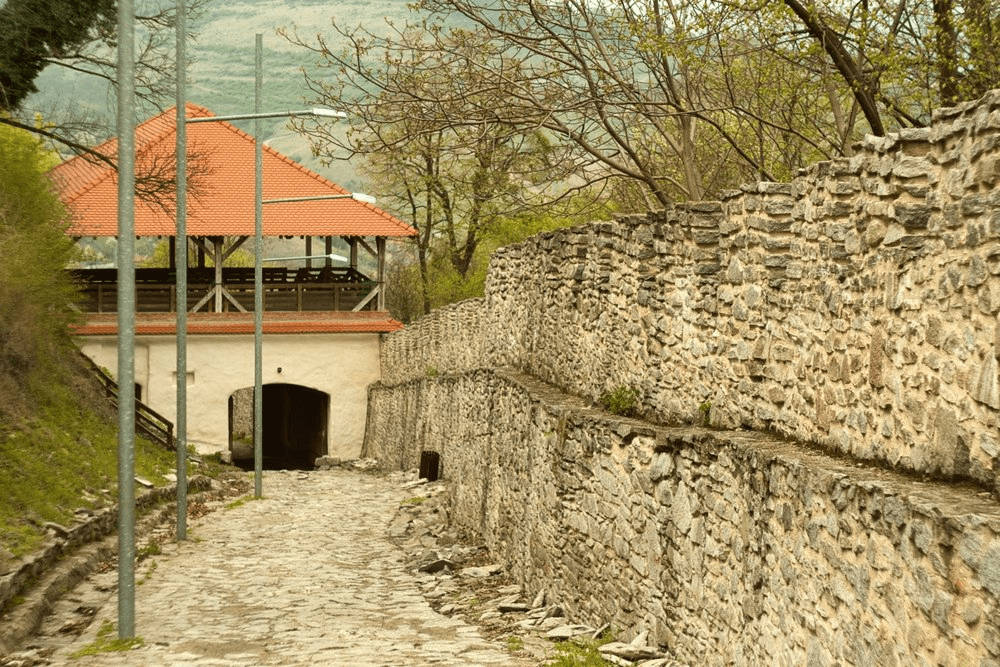
Visiting Deva Citadel starts with a choice: do you want to climb quickly and comfortably or enjoy a walk in nature, with fresh air and spectacular views? Whichever option you choose, each has its own charm and makes the walk up to the citadel a memorable part of the experience.
By cable car
For those who want a fast and spectacular ascent, the cable car is the best choice. The Deva Citadel cable car is unique in Romania, being the only inclined elevator of its kind in the country. The route has a length of 278 meters and a difference in level of 158 meters, which it covers in about two minutes.
The cabin starts at the bottom of the hill and takes you directly to the approach to Gate 1 of the fortress, giving you a great view of the city and its surroundings along the way. It’s ideal for families with children, elderly people or tourists who want to get to the main objective quickly.
By foot
For lovers of nature and exercise, the walk up to the fortress is a charming experience. The Citadel Hill is crisscrossed by shady lanes and footpaths that offer moments of tranquility and great photo opportunities. There are three main walking trails, each of varying difficulty and duration:
- Trail 1 (about 45 minutes) – starts from behind the restaurant at the foot of the hill and winds up at a leisurely pace, ideal for a relaxing walk.
- Route 2 (about 40 minutes) – starts from the tunnel entrance on the right hand side and runs through a heavily vegetated area, providing shade and resting areas.
- Route 3 (about 30 minutes) – this is the shortest and perhaps the most popular, starting in front of the tunnel on the left side. It is a more direct but slightly steeper route.
All three routes converge at Gate 1 of the fortress. As you climb, Deva city becomes clearer and clearer in the valley, and on clear days, the view stretches far into the distance, towards the Poiana Ruscă Mountains or the Mures River.
By car
Access by car is possible as far as near the fortress, but it involves a narrow and rather steep road through the forest. The car route starts from the Central Park, passes the Sports High School and continues through the old trees on the hillside. Please note that there is no special parking lot right at the gate of the fortress, so it is recommended to use this option only if you are used to such roads or if there are no other alternatives.
▶️ If you don’t have your own car at your disposal, you can opt for Enterprise’s car rental service, which can provide you with a vehicle that suits your budget and needs.
Whatever route you choose, the climb to Deva Citadel is part of the charm of the visit – a combination of history, nature and urban adventure. And once you get to the top, the rewards are worth it: an imposing citadel and breathtaking views.
Deva Citadel – program and prices
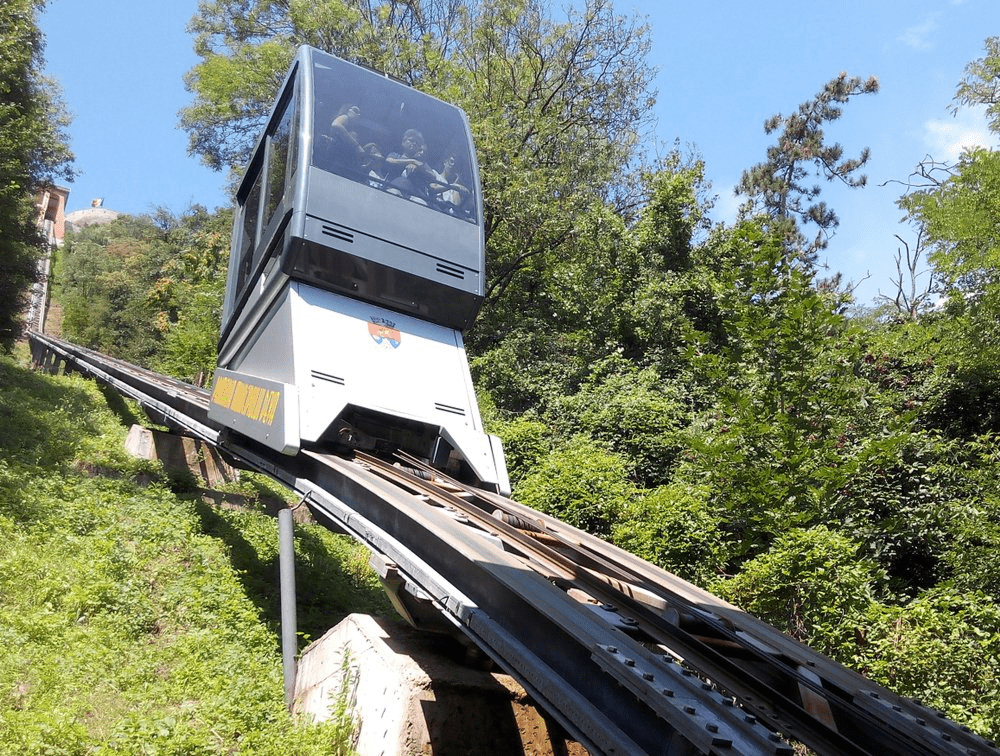
Deva Fortress is open daily, with the following program:
- May 1 – September 30: 09:00 – 21:00
- October 1 – April 30: 08:00 – 20:00
The last cable car ride takes place 45 minutes before closing time.
For fares, the situation is as follows:
- Access to Deva Citadel is free of charge.
- Going up by cable car costs the following (round-trip):
- adults: 30 lei;
- children up to 14 years and pensioners: 15 lei;
- disabled persons: free of charge.
It is important to note that the Deva Citadel cable car may be temporarily closed for maintenance works or due to bad weather conditions. In these cases, access can be made on foot, following one of the three pedestrian routes available.
For a complete visit, we recommend that you set aside about 2-3 hours to explore the entire complex of Deva Citadel, including climbing up, discovering the ruins and admiring the view of the city and the Mures Valley.
Attractions and points of interest in Deva Citadel
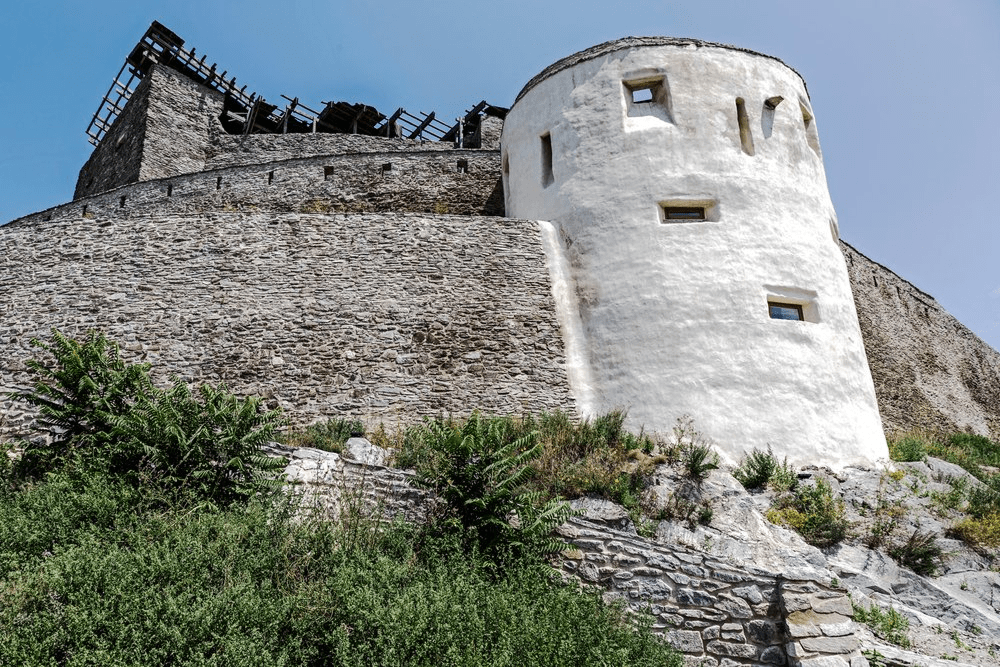
Once on the upper plateau of Deva Citadel, history comes alive at every step. Strategically perched on a volcanic hill, the fortification combines a spectacular natural landscape with the vestiges of an eventful past, offering visitors a route full of fascinating discoveries.
Gate I
Built between 1699-1700, Gate I marks the main entrance to the citadel. It is a special place historically because it was once the guardroom, where soldiers controlled the access of each visitor. Stepping through this gate feels like stepping into another time.
Indoor enclosure
The trapezoidal central area of the citadel is home to the ruins of noble palaces and other medieval buildings. Here, amid the ancient stones, you can imagine court life, the daily scenes of the garrison or the tense moments of the battles that shaped the history of the place.
Bethlen Bastion
This semi-cylindrical bastion, built in the 17th century, played an essential role in defending the citadel. Imposing and well-preserved, it offers a glimpse into the military architecture of the period and gives you a better understanding of the fortification’s defense strategy.
The artillery platform
Located on the eastern side, this area was used for cannon emplacement. Today it offers one of the most beautiful vantage points in the citadel, with a sweeping view of the Mures Valley and the surrounding area.
Big Cellar
A vast underground space transformed into a small museum dedicated to medieval military life. The exhibition here captures moments in the lives of soldiers, from daily routine to organizing supplies, in a cool and mysterious setting.
Other points of interest worth exploring include:
- The defense walls, with ramparts still visible, evoking the atmosphere of a medieval fortress.
- The ruins of observation and defense towers, strategically placed to keep watch over the region.
- The fortress cistern, a vital construction for water supply during sieges.
- The remains of former storehouses and warehouses, essential for fortification logistics.
Belvedere platform – highlight of the visit
At the top of the fortress is the belvedere platform – a wide space from where the view is lost in the distance. From here, you can admire Deva in all its splendor, the winding course of the Mures and, on clear days, the blue silhouettes of the mountains in the distance. For a complete experience, tourists can use the binoculars placed to observe the details of the landscape or even remote villages.
▶️ For more details on how to rent a car from Enterprise Rent a Car, read our article Essential tips for novice drivers when renting a car.
Unique experiences at Deva Fortress
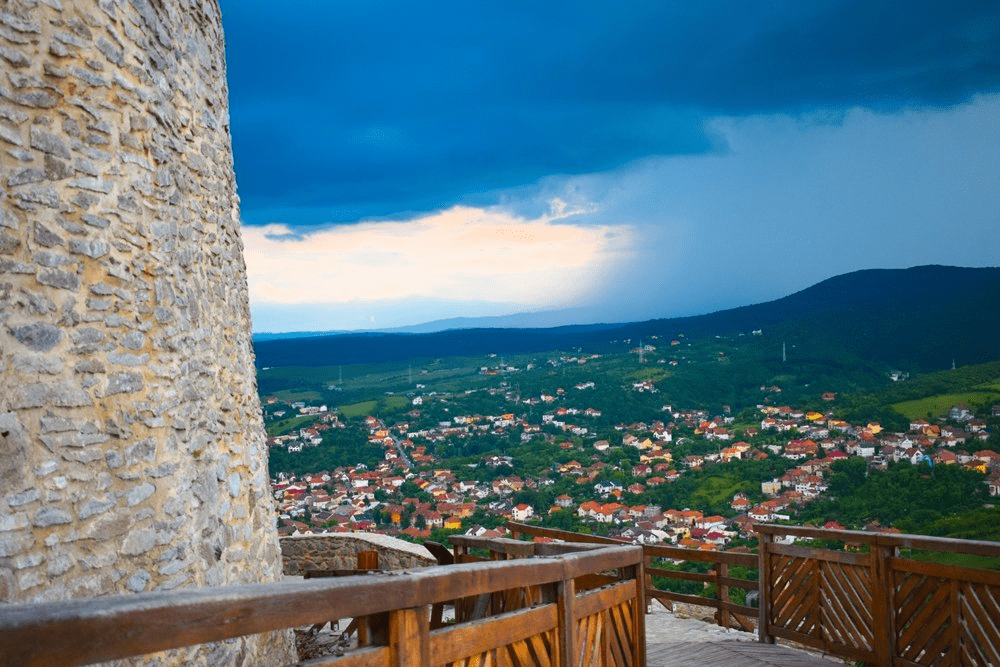
A visit to Deva Citadel is not just a trip into the past, but a real adventure in the heart of Transylvania, where history, nature and culture are spectacularly intertwined. Whether you’re passionate about landscapes, medieval mysteries or cultural events, you’ll find something here to delight your senses and leave a lasting impression.
Spectacular panorama
One of the highlights of the visit is climbing up to the platform at the highest point of the fortress. From here, the horizon opens up into a wide view, including the city of Deva, with its modern buildings mixed with period architecture, the Mures Valley, wide and picturesque, winding through rolling hills, the Apuseni Mountains, which loom on the horizon with gentle contours, always shrouded in a special light and the Pădurenilor Land, a traditional area rich in customs, which retains its authenticity and rural charm.
For the full experience, use the binoculars on the platform – you’ll be able to spot details of the landscape that escape the naked eye, from the church towers in the neighboring villages to the paths of the roads that criss-cross the plains.
Cultural events
In summer, Deva Citadel becomes a lively scene where history comes alive with a variety of events that attract locals and tourists alike.
There are open-air theater performances right within the walls, creating a magical atmosphere where the past intertwines with contemporary art, concerts that take advantage of the natural acoustics of the space and offer a special sound experience, and even medieval festivals with knights in armor, craftsmen, dances and parades that transform the fortress into a real world from another age.
Hiking trails
For those who love nature and movement, walking up to the citadel is a real joy. The three footpaths winding through the forest offer not only active relaxation, but also plenty of opportunities to admire the local flora, take photos or simply enjoy the tranquillity of the forest. Along the way, information panels give you details about the fortress and its history, making the trail an educational and recreational experience at the same time.
Sights to visit in Deva Fortress area
If you’ve made it to Deva Citadel, it’s also worth exploring other attractions in the area, which combine history, culture and nature in an exciting way.
Magna Curia Palace and the Museum of Dacian and Roman Civilization
Located at the foot of the Citadel Hill, this Renaissance palace houses a museum offering a fascinating insight into Dacian and Roman history, with valuable artifacts and interactive exhibitions.
Gymnasts Alley
A tribute to the achievements of Romanian gymnastics, this alleyway features the busts of Romania’s greatest sportswomen, a place of inspiration and national pride.
Corvin Castle in Hunedoara
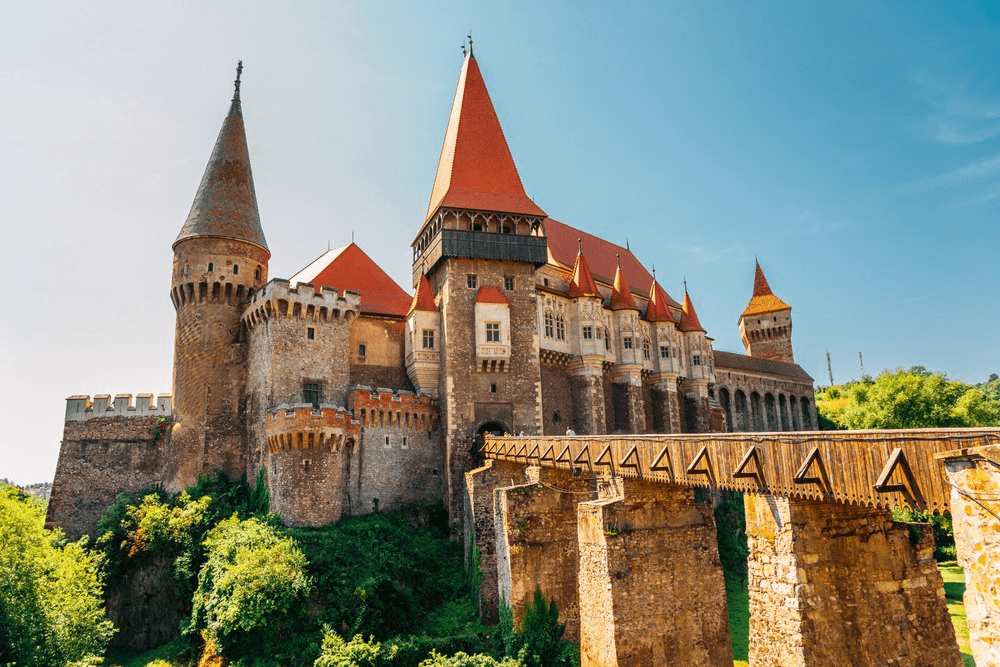
About 20 km from Deva, this Gothic castle is one of the best preserved and most impressive in Europe, offering an authentic glimpse into medieval life.
▶️ Deva Citadel and Corvin Castle can be reached by car via several access roads. Discover the most beautiful roads in the country.
Simeria Dendrological Park
It is one of the oldest and most diverse dendrological parks in Romania, ideal for relaxing walks and observing an impressive variety of tree species.
Prislop Monastery
Set in a beautiful natural setting, this monastery is an important place of pilgrimage and retreat, attracting visitors from all over the country.
The Deva Fortress is waiting for you to discover its secrets and to let yourself be conquered by its historical and natural charm. Plan your visit, prepare yourself for a journey into the past and enjoy an unforgettable experience in the heart of Transylvania.
Sursa foto: Shutterstock


